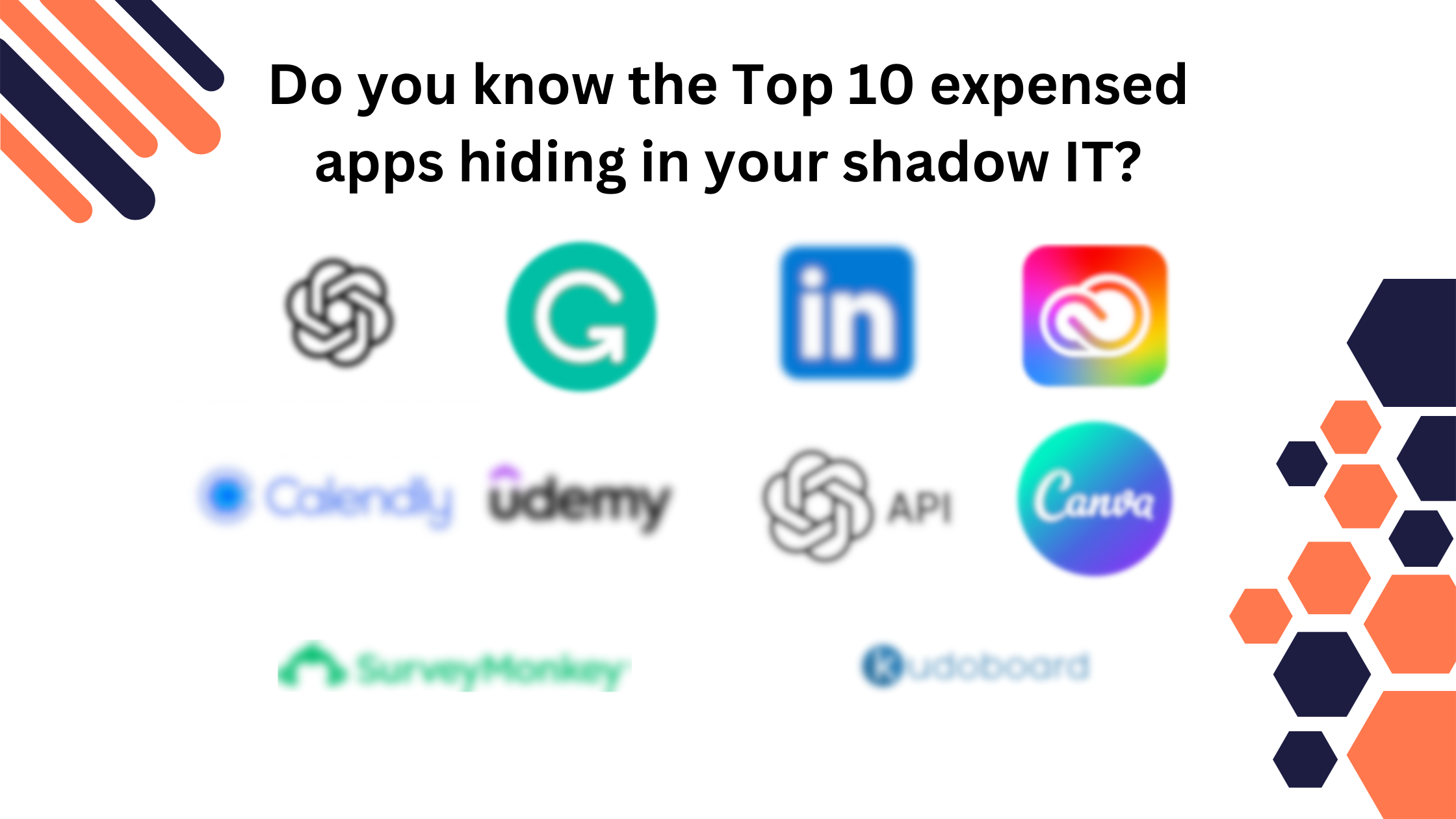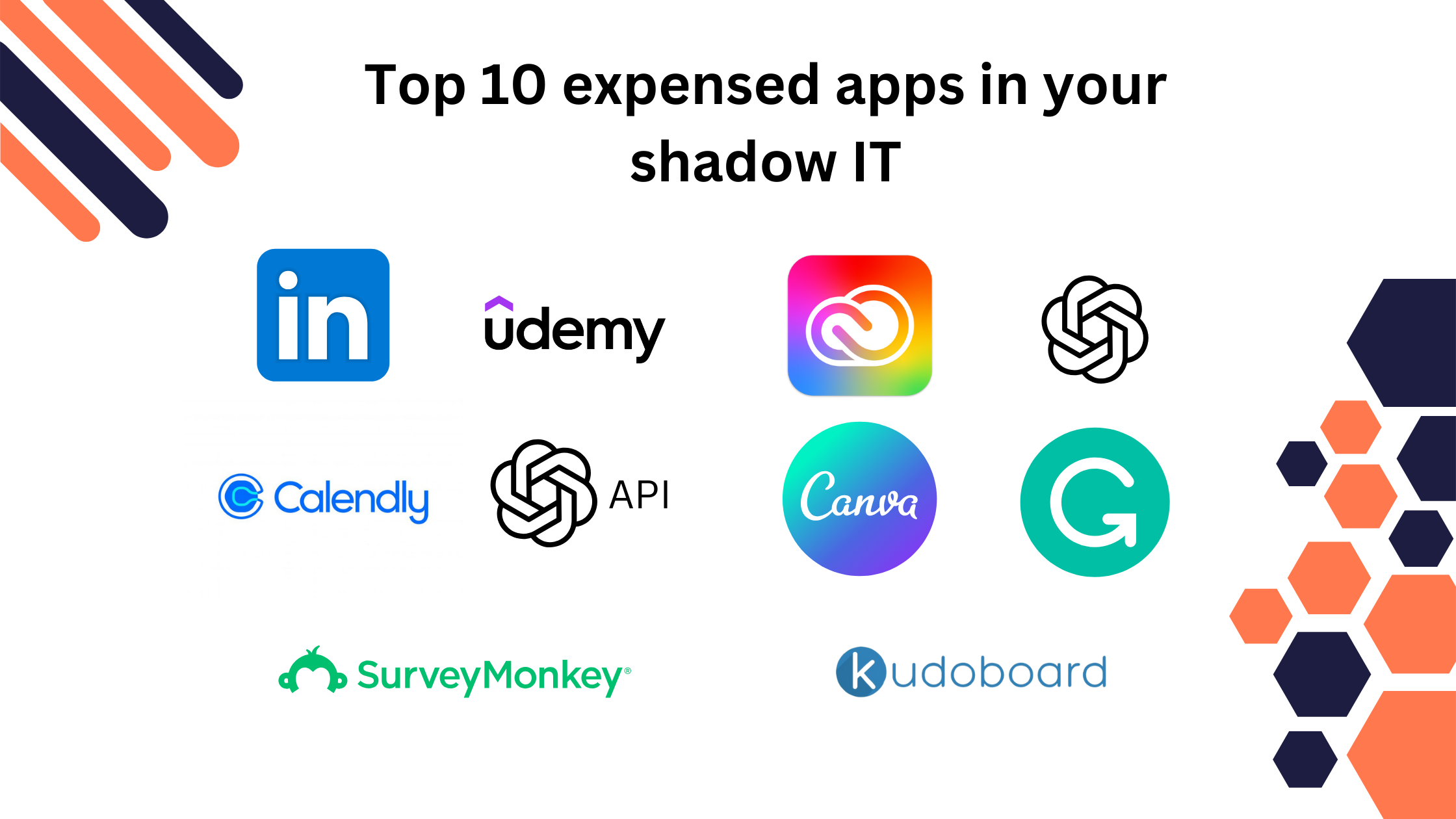The Hidden Costs of Shadow IT - Top 10 Most Expensed SaaS Apps

Table of Contents
In today’s fast-paced work environment, employees need tools that empower them to work efficiently, collaborate effectively, and automate daily tasks. However, with more employees expensing software solutions independently, businesses face a growing challenge—managing the hidden costs of shadow IT. These expensed tools can quietly inflate your budget, while contributing to data silos, security risks, and inefficiencies.
Shadow IT Expensed apps now account for up to millions in annual company spending, often without oversight or optimization. But the real concern isn’t just the spend—it’s the hidden impact on your SaaS stack. How many tools are being used across your organization without your IT department’s knowledge? This leads us to the critical problem of shadow IT.
What is Shadow IT and Why Does it Matter?

Shadow IT refers to the use of software, tools, or platforms by employees without formal approval or involvement from the IT department. While it can start with good intentions—employees find tools that make their work easier—it often results in uncontrolled spending and a fragmented SaaS environment.
Here’s why it’s a problem:
- Wasted budget: Without visibility, companies often pay for licenses that aren’t being used or overlap with existing tools.
- Security risks: Unapproved apps bypass normal security protocols, increasing the risk of data breaches.
- SaaS sprawl: Too many tools spread across departments create data silos, making it harder to manage and maintain security and compliance.
- To prevent these issues, businesses need to take back control by tracking and managing SaaS apps across the entire organization.
Top 10 Expensed SaaS Apps in 2024

Based on industry insights, these are the top 10 most-expensed SaaS apps of 2024. This list includes tools that employees love, but without careful monitoring, they can quickly spiral into budget drains and security concerns.
-
LinkedIn Employees frequently expense LinkedIn Premium accounts for networking and professional development. While it’s useful, it’s often underutilized, leading to unnecessary costs.
-
Udemy Online learning platforms like Udemy have become widely expensed for upskilling employees. However, without monitoring usage, you might be paying for courses that no one completes.
-
Adobe Creative Cloud A must for creative teams, but many companies provide licenses to entire departments when only a few people regularly use it.
-
ChatGPT (AI-Powered) With the rise of AI, many employees are expensing tools like ChatGPT for writing assistance and automation. But these expenses can quickly add up if they aren’t managed centrally.
-
Calendly Scheduling apps like Calendly are convenient, but employees expensing multiple scheduling tools can result in unnecessary duplication, driving up costs for a task that one tool could handle.
-
OpenAI API (AI-Powered) Another rising star in the AI world is the OpenAI API, used for advanced language processing. While it offers incredible capabilities for innovation and automation, the cost of API access can quickly spiral out of control, particularly when purchased without proper budget tracking or governance.
-
Canva Canva democratizes design, allowing employees without graphic design experience to create professional materials. However, companies often buy more licenses than needed.
-
Grammarly Frequently expensed for writing and editing support, Grammarly is a useful tool. But when licenses are unused or go unmanaged, the costs stack up.
-
SurveyMonkey Often expensed for gathering feedback and data, SurveyMonkey is a helpful tool but can lead to wasted spending if the same features are available through existing platforms.
-
Kudoboard Kudoboard offers a fun way for employees to create virtual boards for team recognition or celebrations. However, it’s often expensed for one-off projects, leading to underutilized licenses that contribute to unnecessary costs.
Key Tips to Manage Expensed Apps
-
Increase Visibility Without visibility, you can’t manage what you’re paying for. Start by identifying all the SaaS tools your employees are expensing. This can be as simple as auditing financial reports and tracking SaaS payments through expense systems. Ensuring IT knows what apps are being used is the first step to controlling costs.
-
Audit Regularly Regular audits are crucial for identifying unused or underutilized licenses. Set up a routine, whether quarterly or bi-annually, to review which tools are actually providing value. If you find that certain tools haven’t been used for months, it’s time to reallocate those licenses or cut them entirely.
-
Centralize SaaS Purchasing Avoid the chaos of shadow IT by creating a central approval process for SaaS purchases. This ensures that all departments are aligned, and software tools are vetted for both security and efficiency. By consolidating purchases, you can reduce overlap and negotiate better pricing.
-
Optimize License Usage Before purchasing new licenses, make it a policy to review current usage and reallocate any unused seats. This can save thousands in unnecessary license costs, especially with high-priced tools like Salesforce or Adobe Creative Cloud.
-
Foster Cross-Departmental Collaboration Encourage departments to communicate about the software they’re using. Often, different teams end up using duplicate tools that perform the same function. Regular meetings between IT, finance, and department heads can help identify redundant apps and streamline purchases.
Is your team unknowingly paying for tools that are sitting idle or forgotten? Many organizations discover far too late that they’re spending thousands of dollars on software that no longer serves its purpose or has been duplicated by newer tools.
Take a moment to consider: how often do you audit your software stack? Are different departments purchasing their own solutions without IT’s knowledge? These small inefficiencies can quietly drain your budget without providing the value you expect. With rising SaaS costs and increasing pressure to optimize spending, now is the time to take control.
The question is—how much are you unknowingly overpaying for unused licenses, redundant tools, or apps you didn’t even know your teams were using?
It might be time for a closer look at your SaaS landscape. What could you save by doing so?

 Never miss a story from us, subscribe to our newsletter
Never miss a story from us, subscribe to our newsletter